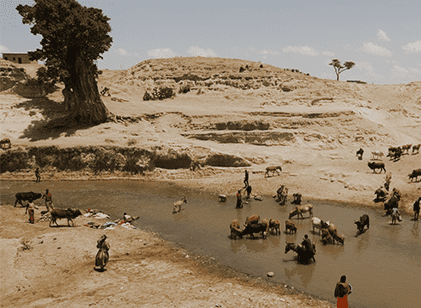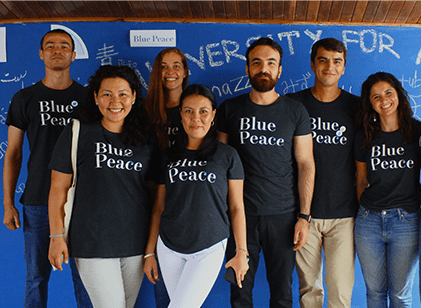Financing and Investing
Here, we provide an overview of the conceptual investment framework with the goal of inspiring local governments and financial institutions as well as multilaterals to develop innovative financial instruments to support Blue Peace.
What is the Blue Peace approach?
Joint Investment Plans
The Blue Peace approach to investment is based on the development of transboundary, multisectoral joint investment plans. These plans involve multiple sectors (energy, agriculture, manufacturing etc.) as well as multiple countries or municipalities. Joint investment plans include investments required for the provision of electricity or water for irrigation, industrial use, human consumption such as infrastructure, data, monitoring and marketing or other water-related projects.
This transboundary and multisectoral approach incentivizes cooperation and political agreements with water as the ‘entry point’ or reason for engagement, leading to a reduction in social, political and economic conflicts and supporting peace.
Blue Peace Bonds
Taking the Blue Peace joint investment plan from concept to reality requires a new financing structure blending public money and private capital – or blended capital. This blended capital can be used to invest in a new type of financial instrument – the Blue Peace Bond.
Blue Peace Bonds will be issued by a municipality, transboundary water organisation or another non-sovereign entity and they will be backed by cash-flows from the underlying projects. They will take on different structures depending on the revenue expectations of a specific joint investment plan and will match cash-flows generated by projects.
Why invest in Blue Peace
The Blue Peace approach uses water as a mechanism for enhancing peace and cooperation between governments. The investment framework also provides concrete opportunities for local governments, financial institutions and multilateral organisations.

Sustainable impact: Investing in Blue Peace enables the investor to generate positive, measurable social and environmental impact alongside a financial return.

The risk-return profile: De-risking mechanisms improve the risk-return profile of Blue Peace investments.

A long-term investment: Investing in Blue Peace means investing for the long term. Long-term investments face lower volatility and are therefore less risky. Long-term investments also often provide tax advantages and have lower transactions costs.

A multisectoral investment: An investment in Blue Peace means investing in multiple sectors including water, energy and food. These multisectoral investments are based on pre-negotiated joint investment plans which means the needs and interests of the different actors have already been considered in the planning process. This reduces the risk of tensions between different actors and provides an improved risk-return profile.

Blended finance: Like achieving the Sustainable Development Goals, investing in Blue Peace requires a blended finance approach, where public financing coupled with philanthropic capital, takes over important part of the risk mitigation, allowing private investors to step in. This helps improve the risk-return profile and provides more security for private investors in the long term.

Transboundary investment: Investing in Blue Peace means investing in transboundary water projects that incentivize cooperation and peace in the region. This supports economic growth and development in the region by reducing risk through diversification thereby facilitating other investments.

Investing in water: Water is expected to become more valuable than oil as rising demand from people, industries and agriculture will apply pressure on the scarce water supplies worldwide. To assure long-term returns on investments in water related goods and services, water has to be preserved, ensuring it does not become a scarce resource.

First-mover advantage: Early investments in Blue Peace will allow these investors to establish strong brand recognition and customer loyalty before competitors enter the arena.
Download "Invest in Peace Through Water"
DownloadDownload "Blue Peace Investors Brief: A New Way of Impact Investing"
Download




